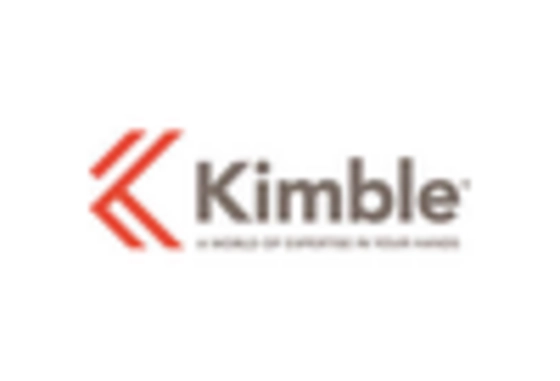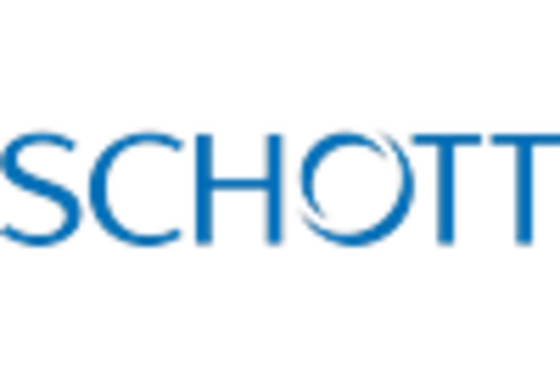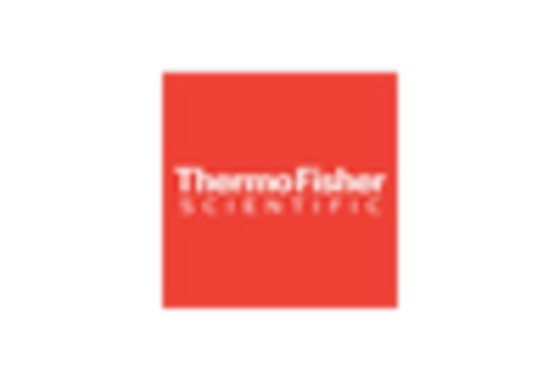Sustainability and Eco-Friendly Practices
Sustainability initiatives are becoming increasingly relevant in the Laboratory Glass Container Market. As laboratories strive to reduce their environmental footprint, the shift towards eco-friendly materials and practices is gaining momentum. Glass containers, being recyclable and reusable, align well with these sustainability goals. Laboratories are increasingly adopting glass containers as part of their commitment to environmentally responsible practices. This trend is further supported by consumer preferences for sustainable products, which is influencing purchasing decisions. The growing awareness of environmental issues is likely to drive demand for laboratory glass containers, as more laboratories seek to implement sustainable solutions in their operations.
Regulatory Compliance and Safety Standards
The Laboratory Glass Container Market is significantly influenced by stringent regulatory compliance and safety standards imposed by various health and safety organizations. Laboratories are mandated to adhere to specific guidelines regarding the storage and handling of hazardous materials, which often necessitates the use of glass containers. These containers are favored for their ability to withstand high temperatures and resist chemical corrosion, thereby ensuring the safety of laboratory personnel and the environment. As regulations evolve, laboratories are increasingly investing in high-quality glass containers to meet these standards, further propelling market growth. The emphasis on safety and compliance is expected to drive a steady demand for laboratory glass containers in the coming years.
Rising Demand for Laboratory Glass Containers
The Laboratory Glass Container Market experiences a notable increase in demand driven by the expanding research and development activities across various sectors. As laboratories seek reliable and durable storage solutions, the preference for glass containers over plastic alternatives is becoming more pronounced. This shift is attributed to the inert nature of glass, which does not react with chemicals, ensuring sample integrity. According to recent data, the market for laboratory glass containers is projected to grow at a compound annual growth rate of approximately 5.2% over the next five years. This growth is indicative of the increasing reliance on glass containers in academic, pharmaceutical, and industrial laboratories, where precision and safety are paramount.
Increased Investment in Research and Development
The Laboratory Glass Container Market is benefiting from increased investment in research and development across various scientific fields. As governments and private entities allocate more resources to scientific research, the demand for laboratory supplies, including glass containers, is expected to rise. This trend is particularly evident in sectors such as pharmaceuticals, biotechnology, and environmental science, where the need for precise and reliable storage solutions is critical. The growing emphasis on innovation and discovery is likely to sustain the upward trajectory of the laboratory glass container market, as researchers require high-quality materials to support their work.
Technological Innovations in Glass Manufacturing
Technological advancements in glass manufacturing processes are reshaping the Laboratory Glass Container Market. Innovations such as improved glass formulations and enhanced production techniques are leading to the development of more durable and versatile glass containers. These advancements not only improve the quality of the containers but also reduce production costs, making them more accessible to laboratories of all sizes. Furthermore, the introduction of customized glass containers tailored to specific laboratory needs is gaining traction. As laboratories increasingly seek specialized solutions, the market for innovative glass containers is likely to expand, reflecting a shift towards more efficient and effective laboratory practices.

















Leave a Comment